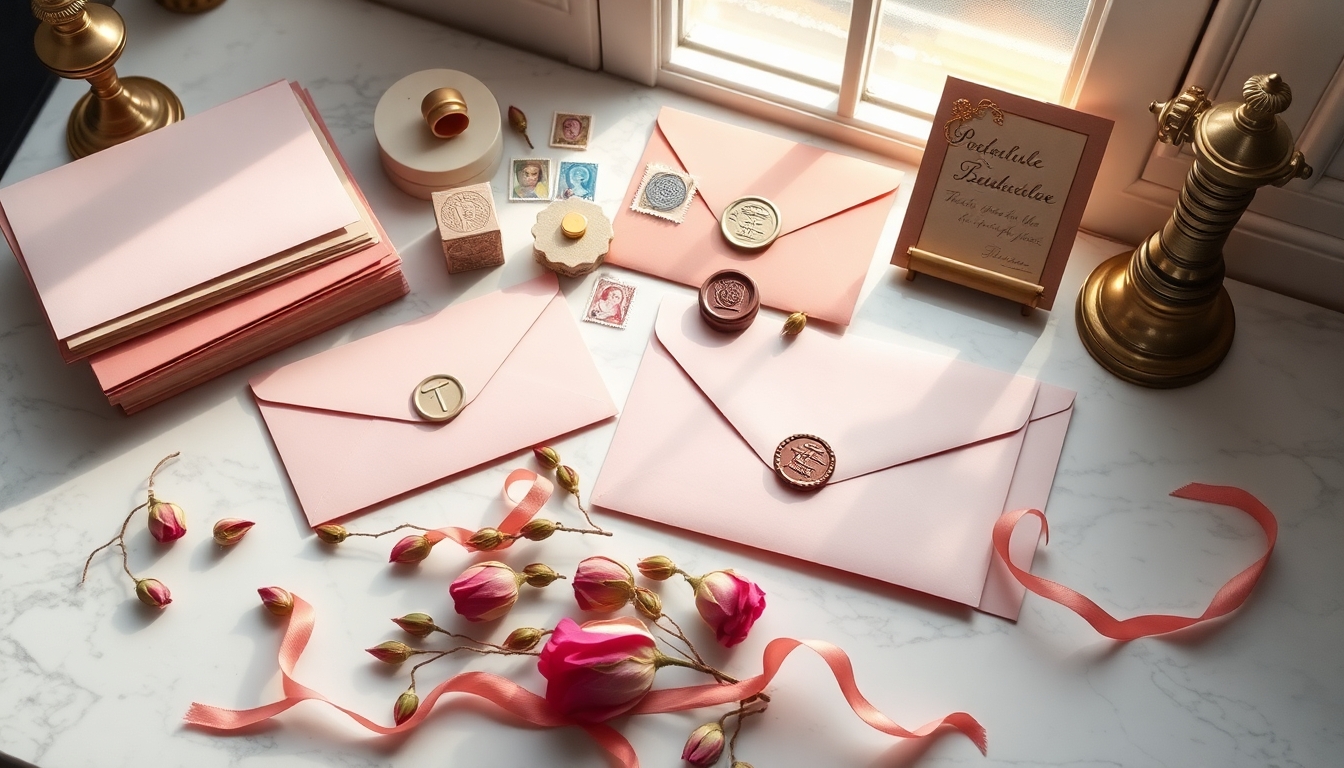Wedding invitations set the tone for your special day. They provide guests with crucial information and offer a glimpse into your wedding style.
Crafting the perfect invitation involves careful consideration of etiquette, design, and personal preferences. From wording to paper selection, every detail matters.
This guide will help you navigate the process of creating invitations that reflect your unique love story and prepare your guests for the celebration ahead.
Let’s explore the key elements of wedding invitation design and etiquette to ensure your stationery makes a lasting impression.
Essential Components of Wedding Invitations
A complete wedding invitation suite typically includes:
- Main invitation card
- RSVP card with return envelope
- Reception card (if separate from ceremony)
- Directions or map card
- Accommodations information
Additional pieces may include:
- Inner envelope
- Belly band or ribbon
- Envelope liner
Each component serves a specific purpose in communicating important details to your guests.
Invitation Wording and Etiquette
Proper wording is crucial for conveying the right tone and information. Consider these guidelines:
- Start with the hosts’ names (traditionally the bride’s parents)
- Use formal language for traditional weddings
- Include the full names of the couple
- Specify the date, time, and location
- Indicate the dress code if applicable
Example wording:
“Mr. and Mrs. John Smith
request the pleasure of your company
at the marriage of their daughter
Emily Jane
to
Michael Thomas Johnson
Saturday, the fifteenth of June
two thousand twenty-four
at four o’clock in the afternoon
The Grand Hotel
New York City”
Choosing the Right Design Elements
Your invitation design should reflect your wedding style. Consider:
- Color scheme: Match or complement your wedding colors
- Typography: Select fonts that suit your theme (e.g., script for formal, sans-serif for modern)
- Paper quality: Choose from options like matte, glossy, or textured
- Embellishments: Add foil stamping, embossing, or laser-cut details for extra flair
Remember, the design should be legible and cohesive with your overall wedding aesthetic.
Timing and Mailing Considerations
Proper timing ensures guests can plan accordingly:
- Send save-the-dates 6-8 months before the wedding
- Mail invitations 6-8 weeks before the wedding date
- Set RSVP deadline 2-3 weeks before the wedding
For destination weddings, send invitations 3 months in advance to allow for travel arrangements.
Pro tip: Order extra invitations (about 25% more) to account for mistakes and last-minute guest additions.
Addressing Envelopes Properly
Addressing envelopes correctly shows attention to detail:
- Use guests’ full names
- Include titles (Mr., Mrs., Dr., etc.)
- Write out addresses completely (no abbreviations)
- Use black ink for a formal look
Example:
Mr. and Mrs. James Wilson
1234 Elm Street
Anytown, State 12345
For couples living together:
Mr. James Wilson and Ms. Sarah Brown
For families:
The Wilson Family or Mr. and Mrs. James Wilson and Family
Personalizing Your Invitations
Adding personal touches can make your invitations truly unique:
- Include a custom monogram or logo
- Use engagement photos as part of the design
- Incorporate meaningful symbols or motifs
- Add a personalized map of your wedding locations
- Include a QR code linking to your wedding website
These elements not only make your invitations special but also create a memorable keepsake for your guests.
Eco-Friendly Options
For environmentally conscious couples, consider these sustainable alternatives:
- Recycled paper or plantable seed paper
- Soy-based inks
- Digital invitations for tech-savvy guests
- Minimalist designs to reduce paper waste
- Local printing to reduce carbon footprint
These choices can reflect your values while still creating beautiful invitations.
Budgeting for Invitations
Invitation costs can vary widely. To stay within budget:
- Determine your overall stationery budget (typically 2-3% of total wedding cost)
- Prioritize essential elements and cut back on extras
- Compare prices from different vendors
- Consider DIY options for certain components
- Opt for digital RSVPs to save on return postage
Remember, invitations are often the first tangible item guests receive, so invest wisely to set the right tone.
Proofreading and Quality Control
Before finalizing your order:
- Double-check all spelling, dates, and times
- Verify addresses and contact information
- Review grammar and punctuation
- Have multiple people proofread
- Order a sample before bulk printing
Taking these steps can prevent costly mistakes and ensure your invitations are perfect.
Conclusion
Creating the perfect wedding invitations requires careful planning and attention to detail. By considering design, wording, timing, and personalization, you can craft invitations that not only inform your guests but also capture the essence of your special day.
Remember, your invitations are more than just paper – they’re the first glimpse into your wedding celebration and a lasting memento of your love story. Take the time to make them truly reflect who you are as a couple, and you’ll set the stage for a memorable wedding experience.
